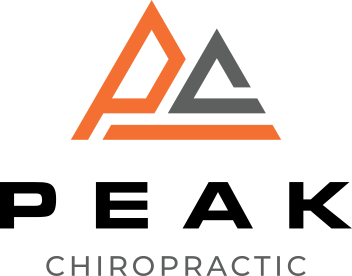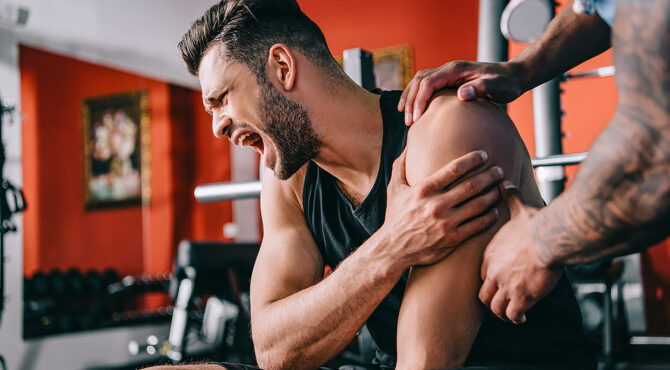When you think about maximizing your athletic performance, it's crucial to recognize that adjustments are key. You might be surprised at how fine-tuning your technique, nutrition, and mental conditioning can lead to significant gains. Each small change can create a ripple effect, enhancing your overall effectiveness. However, understanding what adjustments to make and when can be complex. What if there are specific metrics or strategies you haven't considered yet that could elevate your game? The next steps could change everything.
Understanding Performance Metrics
How can you truly gauge your athletic performance? It all comes down to understanding key performance metrics. These metrics are essential for evaluating your progress and pinpointing areas for improvement. You should focus on a mix of quantitative and qualitative data to get a full picture of your abilities.
First, look at physiological metrics like heart rate, VO2 max, and lactate threshold. These numbers reveal how your body responds to exercise and its overall efficiency. Tracking your heart rate during workouts helps you stay within your ideal training zones, ensuring you're pushing hard enough without overexerting yourself.
Next, consider performance metrics specific to your sport. For instance, if you're a runner, monitor your pace, distance, and split times. For strength training, keep an eye on the weights lifted and the number of repetitions completed. These metrics provide concrete evidence of your progress and can highlight when it's time to increase your intensity.
Don't forget about subjective metrics, like perceived exertion and recovery levels. These can offer insights into how you're feeling during and after workouts. Keeping a training journal can help you connect the dots between how you feel and the numbers you see.
Importance of Technique Adjustments
Making technique adjustments is crucial for maximizing your athletic performance. When you refine your technique, you enhance efficiency, reduce the risk of injury, and increase your overall effectiveness in your chosen sport. Whether you're running, swimming, or playing a team sport, small tweaks can lead to significant improvements.
First, consider how your body moves during your activity. Are your movements fluid and natural, or do you feel awkward and strained? By analyzing your technique, you can identify areas that need improvement. You might find that adjusting your posture, grip, or foot placement can help you perform better. For instance, focusing on your arm swing while running can improve your speed and endurance.
Next, working with a coach or using video analysis can provide valuable feedback. They can help you spot flaws in your technique that you might overlook. You can then practice these adjustments consistently until they become second nature. Remember, perfect practice makes perfect.
Finally, don't underestimate the importance of flexibility and strength in supporting your technique. Incorporating strength training and stretching into your routine can guarantee you have the necessary muscle control to execute adjustments effectively.
Role of Nutrition in Performance
Nutrition plays an important role in enhancing athletic performance, and it's essential to fuel your body properly. What you eat directly impacts your energy levels, recovery times, and overall performance. To maximize your potential, you need to focus on a balanced diet rich in carbohydrates, proteins, and healthy fats.
Carbohydrates are your body's primary energy source, especially during high-intensity workouts. Incorporating whole grains, fruits, and vegetables into your meals can help you maintain ideal energy levels.
Don't underestimate the power of hydration either; staying well-hydrated guarantees that your muscles function efficiently and helps prevent fatigue.
Protein is necessary for muscle repair and growth. Aim to include lean sources of protein, like chicken, fish, beans, and legumes in your diet. Consuming protein post-workout can greatly aid in muscle recovery, allowing you to bounce back faster for your next training session.
Healthy fats shouldn't be ignored either. Foods like avocados, nuts, and olive oil provide essential fatty acids that support overall health and energy levels. They also help in the absorption of fat-soluble vitamins, which are critical for various bodily functions.
Lastly, timing matters. Eating the right foods before, during, and after your workouts can enhance performance and recovery.
Experiment with your meal timing and composition to find what works best for you. By prioritizing nutrition, you'll set yourself up for success on the field or in the gym.
Mental Conditioning Techniques
Mental conditioning techniques are essential for athletes looking to enhance their performance. These methods help you develop mental resilience, focus, and confidence, which are vital for success in competitive sports.
One effective technique is visualization. By picturing yourself successfully executing skills or competing under pressure, you can train your mind to react positively in real situations. Try to create vivid mental images that engage all your senses.
Another powerful tool is positive self-talk. Replace negative thoughts with affirmations that reinforce your abilities. For instance, telling yourself, "I'm strong and capable," can boost your confidence and keep you motivated.
Practicing mindfulness is also beneficial. By being present in the moment, you can reduce anxiety and distractions during competitions. Focus on your breath, allowing yourself to center your thoughts and emotions.
Goal setting is another mental conditioning technique that can greatly impact your performance. Establish specific, measurable, achievable, relevant, and time-bound (SMART) goals. This approach gives you a clear direction and helps track your progress, making it easier to stay motivated.
Lastly, you shouldn't underestimate the power of routine. Developing a pre-performance routine can help you feel more in control and focused. Incorporate elements that calm your nerves and prime your mind for competition.
Recovery and Rest Strategies
To achieve peak athletic performance, prioritizing recovery and rest strategies is important. Without proper recovery, your body can't repair itself, leading to fatigue and decreased performance. You need to listen to your body and recognize when it's time to take a break.
Here are a few strategies you can incorporate into your routine:
- Active Recovery: Instead of complete rest, engage in low-intensity activities like walking or yoga. This keeps your blood flowing and aids in muscle recovery without putting too much strain on your body.
- Sleep Hygiene: Don't underestimate the power of quality sleep. Aim for 7-9 hours each night, and create a bedtime routine that promotes relaxation. Avoid screens before bed, and keep your sleep environment dark and cool.
- Nutrition and Hydration: What you eat and drink plays a significant role in recovery. Focus on a balanced diet rich in protein, healthy fats, and complex carbohydrates. Don't forget to hydrate adequately, as water is essential for muscle recovery and overall health.
Incorporating these recovery strategies into your training regimen can help you bounce back faster and perform at your best.
Equipment and Gear Optimization
When it comes to maximizing your athletic performance, the right equipment and gear can make all the difference.
Ensuring a proper fit is essential, as it directly affects your comfort and efficiency.
Plus, advancements in material technology can enhance your performance in ways you mightn't have considered.
Proper Fit Importance
Achieving peak athletic performance hinges on the proper fit of your equipment and gear. When your gear fits well, you'll notice improved comfort, reduced risk of injury, and enhanced overall performance. A proper fit allows for better movement, which translates to more effective training sessions and competitions.
Here are a few key aspects to reflect on:
- Footwear Fit: Shoes that fit correctly provide the right support and cushioning, vital for preventing blisters and other foot injuries.
- Clothing Comfort: Well-fitted clothing minimizes chafing and distractions, letting you focus solely on your performance.
- Equipment Sizing: Whether it's a bike, racket, or helmet, the right size guarantees ideal control and efficiency.
Don't underestimate how much a proper fit can impact your training. If your gear feels off, it can hinder your performance and make workouts more challenging than they need to be.
Regularly assess and adjust your equipment to keep everything in check. Investing time in finding the right fit is significant; it can be the difference between merely participating and truly excelling in your sport.
Material Technology Advancements
Innovations in material technology have revolutionized athletic gear, enhancing performance and safety like never before. You'll find lightweight fabrics that wick away moisture, keeping you cooler and more comfortable during intense workouts.
These advanced materials not only reduce chafing but also allow for greater freedom of movement, so you can focus entirely on your performance.
Look at footwear, for instance. With advancements in cushioning technology and durable, breathable materials, you can enjoy better support and traction tailored to your specific sport.
Whether you're sprinting on the track or hiking rugged trails, the right shoes can greatly boost your performance and reduce injury risk.
Athletic apparel has also benefited from breakthroughs in fabric technology. Compression garments now offer muscle support, enhancing blood flow and reducing fatigue.
Plus, the introduction of smart textiles with embedded sensors can provide real-time data on your performance metrics, allowing you to make informed adjustments.
Monitoring Progress and Feedback
Tracking your progress and seeking feedback are essential components of maximizing athletic performance. By keeping a close eye on your training data, you can identify what's working and what isn't. This helps you make informed adjustments to your training regimen. Use a training log or an app to record your workouts, noting key details like intensity, duration, and your feelings during each session. This way, you can spot trends and patterns over time.
Feedback is equally important. Whether it comes from a coach, teammate, or even self-reflection, it provides you with a fresh perspective on your performance. Here are some effective ways to gather feedback:
- Video Analysis: Record your training sessions to visually assess your technique and areas for improvement.
- Peer Reviews: Share your experiences and insights with teammates, as they might notice things you overlook.
- Self-Assessment: Take time to evaluate your own performance and mindset after each training session.
Combine your tracking data with the feedback you receive to create a thorough view of your athletic journey. This helps you pinpoint necessary adjustments, whether it's changing your training strategy, refining your technique, or enhancing your mental approach.
Staying Adaptable to Changes
As you gather data and feedback on your performance, it's important to stay adaptable to the inevitable changes that come with training and competition. You may find that certain strategies work well one day but fall flat the next. Being flexible allows you to adjust your approach based on what the data tells you. This adaptability can make the difference between stagnation and progress.
You might encounter unexpected challenges, whether it's an injury, a shift in competition level, or changes in your schedule. Instead of viewing these obstacles as setbacks, embrace them as opportunities for growth. An adaptable mindset helps you pivot when necessary, allowing you to fine-tune your training regimen or modify your goals.
Consider incorporating regular reviews of your training plan. This way, you can identify what's working and what isn't. If you notice a decline in performance, don't hesitate to tweak your workouts, nutrition, or recovery strategies.
Listening to your body is essential; if something feels off, trust your instincts and make the necessary changes.
Building a Support System
Your support system plays an essential role in maximizing athletic performance. Surrounding yourself with the right people can greatly impact your motivation, focus, and overall success. Whether it's coaches, family, friends, or teammates, having a solid support network helps you stay accountable and pushes you to reach your goals.
Consider these key components when building your support system:
- Positive Influences: Choose people who uplift you and believe in your potential. Their encouragement can help you overcome challenges and setbacks.
- Expert Guidance: Seek out coaches or mentors who've experience in your sport. Their insights can refine your skills and strategies, pushing you to new heights.
- Emotional Support: Athletic pursuits can be mentally taxing. Having friends or family who understand your struggles and celebrate your victories can make all the difference.
Engaging with your support system means communicating openly about your needs and aspirations. Share your goals and challenges with them, and don't hesitate to ask for help when needed.
Conclusion
To truly maximize your athletic performance, embrace a holistic approach. By refining your technique, fueling your body with proper nutrition, and integrating mental conditioning, you set yourself up for success. Remember to prioritize recovery and stay adaptable to any changes that come your way. Don't underestimate the power of a solid support system and regular progress monitoring. With these adjustments, you'll not only enhance your skills but also build the confidence needed to excel in your sport.



